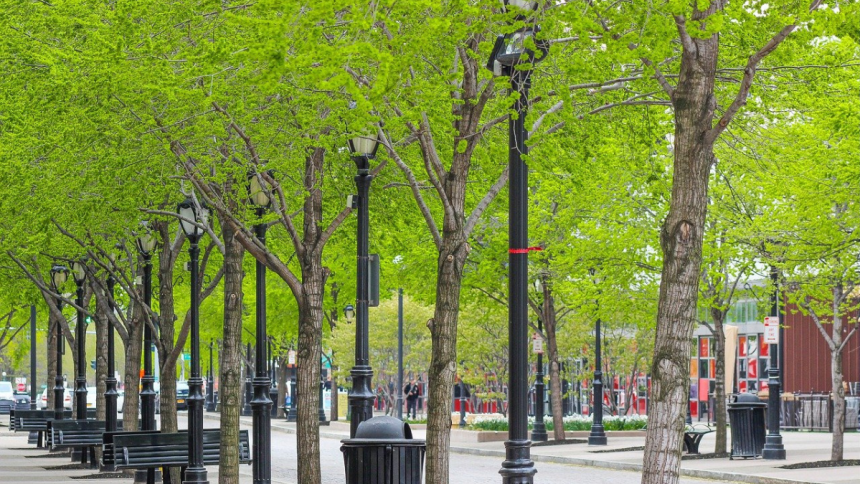The Value of Urban Trees in Modern Cities
Urban trees are essential for city life, shaping neighborhoods, providing environmental benefits, and creating healthier spaces for people of all ages. They help cool cities by shading buildings, filtering air toxins, and buffering the impacts of extreme weather. A vibrant canopy slows rainfall, reduces runoff and erosion, and provides habitat for local wildlife. Regular tree trimming Fort Worth and maintenance ensure these benefits are available for future residents. Properties surrounded by lush trees often see higher demand and can command premium prices at sale. Communities with thriving trees tend to have significantly higher resident satisfaction levels, increased outdoor recreation opportunities for families and individuals alike, and greater neighborhood connectivity and harmony. Lush greenery not only beautifies the area but also boosts the residents’ well-being and happiness, creating a vibrant, healthy community.
Primary Benefits of Ongoing Tree Care
Urban tree maintenance is crucial for tree health and longevity, as it helps absorb pollutants, sequester carbon dioxide, cool neighborhoods, and prevent property damage. Tree planting programs enhance community health, with children residing near urban groves experiencing lower rates of asthma and respiratory illnesses. Investing in tree maintenance saves on emergency cleanup after storms, as properly pruned trees withstand harsh weather better than neglected ones. These maintenance efforts also enhance environmental, financial, and personal well-being across city blocks.
Common Tree Safety Hazards and How to Spot Them
Urban trees can develop hazards if not properly cared for or ignored. Signs include decaying branches, visible cracks, fungal growth, and leaning to one side. Root rot, premature leaf browning, sticky sap, and excessive limb drop can pose a threat to people, homes, cars, and local infrastructure. Regular inspections are crucial, especially after storms, and reporting unsafe trees to authorities can help prevent costly accidents or loss of trees. Early care benefits the entire community.
Do-It-Yourself vs. Professional Tree Care
Residents play a crucial role in supporting healthy city trees by watering, mulching, and removing dead branches. Regular checks, organic matter supplementation, and regionally adapted species support growth. However, many tree care tasks require the expertise of certified professionals, such as pruning, disease diagnosis, and structural support. These experts stay updated on municipal codes, preserve historically significant trees, and ensure their work doesn’t harm the trees’ long-term health. Building a partnership between residents and professional services is crucial for protecting the beauty and functionality of urban forests.
Developing Urban Tree Maintenance Routines
- Conduct regular inspections. Stroll your property or local park each season, paying attention to changes in foliage color, trunk stability, and canopy density. Look for insect infestations, unusual leaf drop, and signs of disease or dieback.
- Use a seasonal pruning strategy. Late winter or very early spring is usually the best time to prune for tree health, as sap flow is low and growth is just about to begin. Focus on eliminating any branches that are dead, damaged, or pose a risk to people or property.
- Mulch thoughtfully. Apply two to four inches of organic mulch in a ring around the base, but always keep it away from direct trunk contact to avoid rot. Mulch helps retain moisture, moderates soil temperature, and suppresses weeds.
- Follow smart watering practices. Established trees usually require less frequent watering than new plantings. Deep soakings during extended dry spells are ideal, as they encourage roots to grow downwards where moisture is most abundant.
Community Efforts That Make a Difference
Urban tree projects are most effective when the entire community participates. Volunteers participate in tree planting, neighborhood watering drives, and urban forestry education campaigns. These grassroots efforts create resilient city forests and increase the number and quality of healthy trees. Local governments and nonprofits offer workshops on pruning, pest identification, and emergency preparedness. Reporting hazardous trees, supporting sapling adoption, and spreading the positive impacts of canopy growth further strengthen the community’s green backbone.
Data-Backed Health and Financial Outcomes
Urban forests, when managed properly, can significantly cool their surroundings, reduce residential energy bills, and improve social outcomes. Studies show that mature trees can cool their surroundings by up to 9 degrees Fahrenheit, and their presence can lead to lower crime rates, increased physical activity, and improved attention spans for children. Additionally, vibrant, tree-filled properties attract more buyers and increase listing prices.
Smart Steps for Every Resident
- Identify the common trees in your area and understand their care needs—some thrive with little extra help, while others need more regular attention.
- Join city or nonprofit tree care events for hands-on learning and community building.
- Speak up about sick, damaged, or at-risk trees by contacting municipal arborists or reporting through city service apps.
- Teach youth and share easy tree care tips with neighbors, building local stewardship traditions that last.
Final Thoughts
Healthy trees in cities improve public health, property values, and aesthetics. Tree care is a shared responsibility that benefits individuals, communities, and future generations. Regular routines, professional assistance, and community engagement contribute to keeping city trees vibrant and resilient, ultimately benefiting individuals, communities, and future generations.
Lynn Martelli is an editor at Readability. She received her MFA in Creative Writing from Antioch University and has worked as an editor for over 10 years. Lynn has edited a wide variety of books, including fiction, non-fiction, memoirs, and more. In her free time, Lynn enjoys reading, writing, and spending time with her family and friends.















